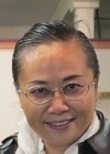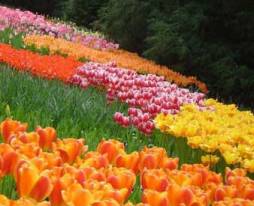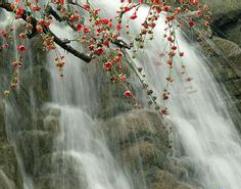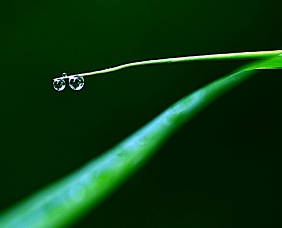|
 Maybe because my life and education have walked through a circle of Art -- Chinese Language and Literature -- Financial and Securities -- Art, I enjoy thinking and working with a multidimensional or interdisciplinary style. Maybe because my life and education have walked through a circle of Art -- Chinese Language and Literature -- Financial and Securities -- Art, I enjoy thinking and working with a multidimensional or interdisciplinary style.
In 2000, as soon as I touched a group of young native English-speaker graduates of Oregon State University, who taught English with an interdisciplinary way, I tried to connect and work with them together for 2 years, then we created and published a series of publications to help Chinese to learn American culture and language by talking American arts of movies, music and so on.
In 2005, when I initially started my web site, I tried to combine music, Chinese poems and language together, and until 2007, I started to create paintings for these poems and music, and also wrote English translation on my painting...
In 2009, during my first art exhibition in Springfield, MO, USA, the positive responses of the local Americans to my singing Chinese poems on my own paintings inspired me to combine painting, music, poetry and more arts together, to create a unique “cross-culture and comprehensive art" in the true world as well.
However, how should I do it practically? What is the relationship of those different art forms? What is their core? Does it make sense on the theory?
With so many questions and an indistinct dream, I walked into China Central Academy of Fine Arts in 2010, went to Kentucky World Language Conference in 2011, and Qingdao World Chinese Teaching Conference in 2011 and 2019, studied in Chinese National Academy of Arts 2011 to 2020, traveled to the US one year once or twice 2009 to 2020 to exhibiting and teaching, while combining what I have learned in China and what I practice in the US into my own publications with poetry, painting and music …
Now, 20 years have passed. On practice, my initial ideas have become a vocal, bilingual poetry and painting serie, thousands of art works, and I myself has also become a Guess Chinese Art Teacher of 4 American K-12 Schools; on theory, I have found variety arts within a Chinese painting and their leader, cleared up their relationship, and base on them, I am sure I have found the connection point of traditional Chinese paintings and Chinese language.
Simply say, my dreamed “Cross-cultural and Comprehensive Art” is an art form which is base on Chinese painting, focus on Chinese poetry, and be assistant by music, calligraphy, characters, literature, languages and cultural background…
Based on Chinese painting, because it is a comprehensive art of poetry, calligraphy, picture, stamp, music, language, literature, characters, stories and so on:
-- Poetry: Chinese people started to write poems on a Chinese painting since Song Dynasty (960—1279) and we seek the aesthetic “There are pictures in a poem and there is poetry in a painting” since Tang Dynasty (618-907) in both art and literature fields.
-- Calligraphy: A Chinese painting is written out instead of painting out. That means every stroke of a Chinese painting should be done as we are writing calligraphy and follow its law. Meanwhile, all words on a Chinese painting, such as the signature of the artist, the poems or the postscript are calligraphy. Both Chinese calligraphy and painting came from the same rootstock.
-- Picture: the main body of a Chinese painting.
-- Stamp: People started to leave a mark on a Chinese painting since the Northern and Southern Dynasties (420-589) and the first stamp of appreciation occurred in During Tang Dynasty (618-907), to show this painting has been seen and kept by the imperial household, and the stamps of artists themselves didn’t do it until Yuan Dynasty(1271 -- 1368). It is a part of a Chinese painting, an art of a seal cutting and the words on it are just calligraphy and characters.
Music: A Chinese poem could be sung since they were created, most of ancient collections of Chinese poems which we can see today are in fact lyrics. Both of poems and music are growing up together. Just because of time too long, the music part has been lost.
-- Language: When we read, write or listen to a poem in modern or ancient Chinese, we are speaking, writing, listening to modern or ancient Chinese language.
-- Literature: poetry is the highest level of literature.
-- Culture background: behind each poem or painting, there is a story and some cultural background…
Among all of these arts, poetry is the core and their leaders, and all of the efforts is just for one purpose, -- to express its poetry.
So, focus on Poetry, because of its core position among all elements of a Chinese painting and for it is the key point between traditional Chinese painting and modern Chinese language, and is one of the main “Storage Warehouse” of modern Chinese primary words.
Choosing music as an assistance, because ancient Chinese poems could be sung and both Chinese vocal music and language have a same pronunciation style.
The purpose of creating a cross-cultural and comprehensive art is to help non-Chinese speakers to learn Chinese culture and language via enjoying and practice variety Chinese arts (while doing similar things to help non-English speakers to learn western culture and language); its work style is creating, teaching, researching and business, and its delivering style should be full-media and face to face…
Today is the New Year's Day, 2020. When I am writing this introduction in the US, I really feel that even though I have been seeking my cross-cultural and comprehensive art dream for 20 years and done something already, it is just the first step of the long dream seeking road. I have just made a little infant who has not been developed completed yet.
So, “The way stretches endless ahead, I shall search heaven and earth.” I would like to work harder and try to improve what I have done on a new level in the upcoming another 10 or 20 year, to create a true and high quality “Cross-cultural and  Comprehensive Art.” Comprehensive Art.”
What is your idea about it? I do hope to be your understanding, and hear your good advice.
If you have any questions, comments and suggestions, please write to info@ebridge.cn . You are always welcome.
Shirley Yiping Zhang
Jan 1, 2020
Written in Springfield, MO, USA
|

















